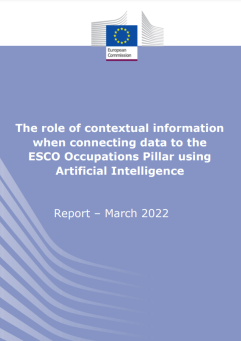The role of contextual information when connecting data to the ESCO Occupations Pillar using Artificial Intelligence

Connecting a job title with an ESCO occupation is often not a trivial task. It can sometimes be done in a straightforward way: the job title ‘Senior Android developer’ can be related to ‘Mobile application developer’ with sufficient confidence. In other cases this can be a more challenging exercise. One of the reasons for this is the size of the ESCO occupations pillar: with nearly 3000 occupations there is a certain level of detail in ESCO. A job title does not always reflect this same level of detail and in some circumstances a mix of different occupations might apply. Therefore, contextual information could be needed to connect external content in a more accurate way to the occupations pillar.
In this part of the article series, we discuss the use of supporting information, e.g. tasks, knowledge and skills to connect data to ESCO occupations. First, we complement a job title with a single piece of additional information. We then examine the outcomes of entirely discarding the job title from the input, only leaving the context with a limited set of skills and tasks. Finally, we experiment with more raw input extracted from a job vacancy.
